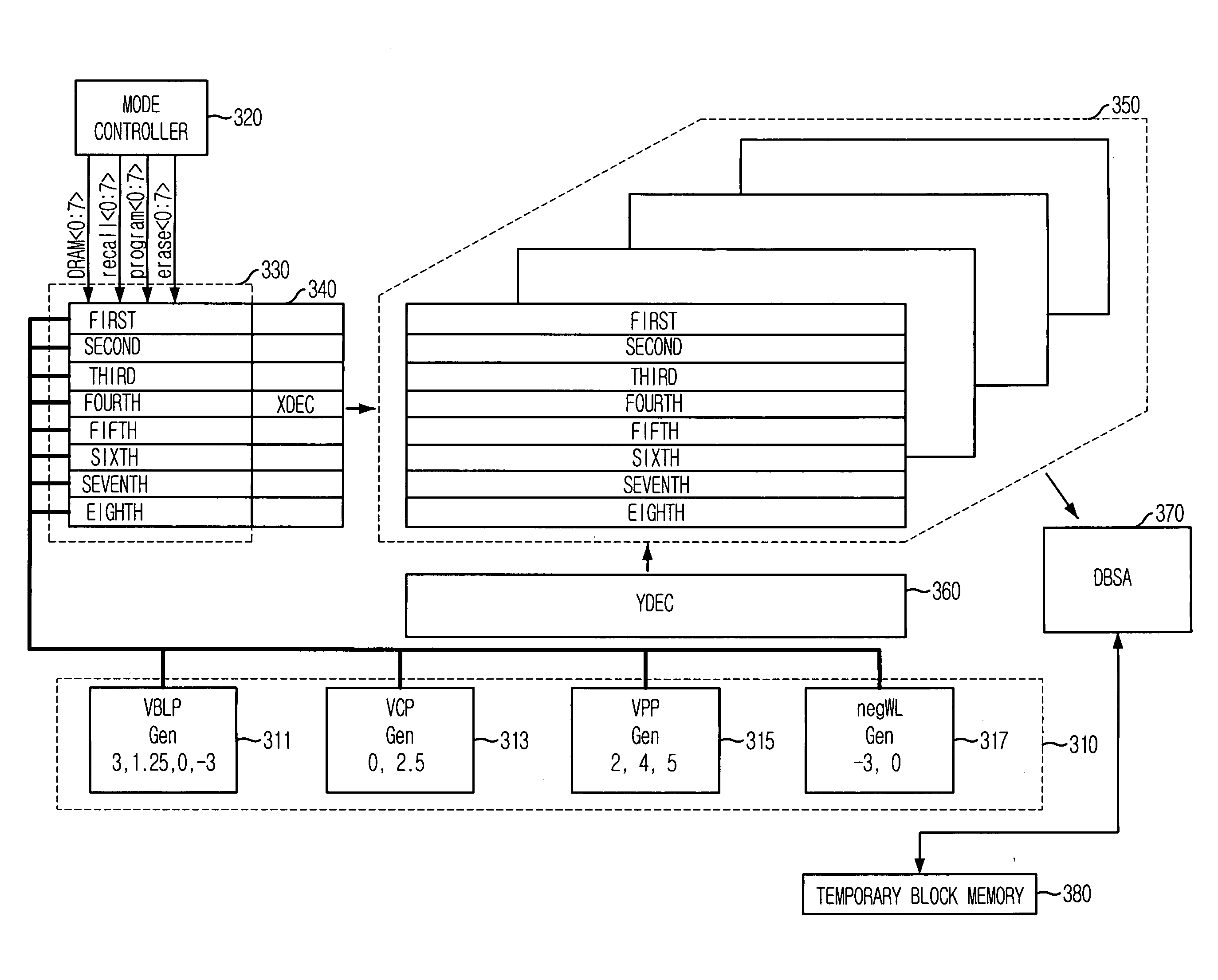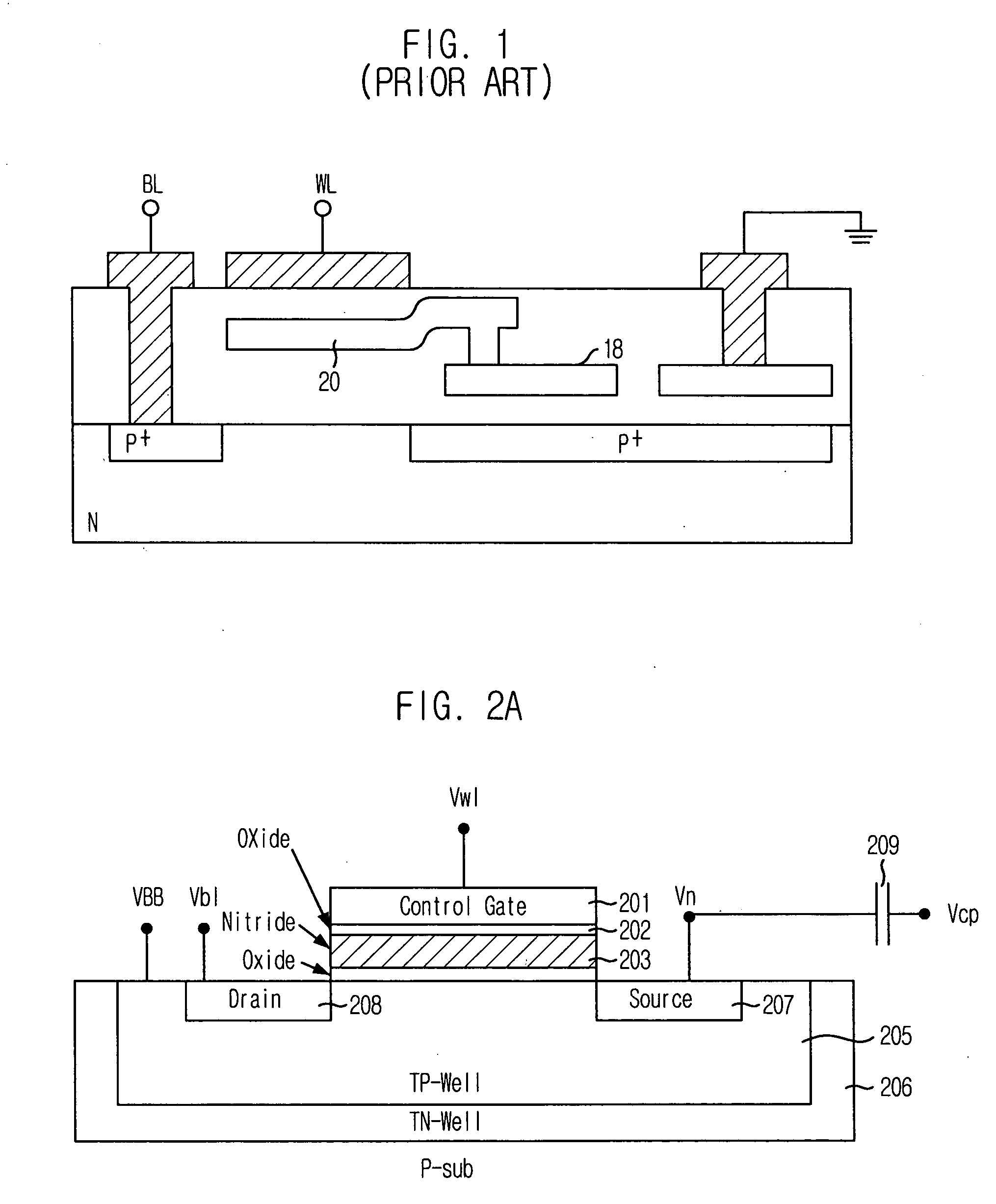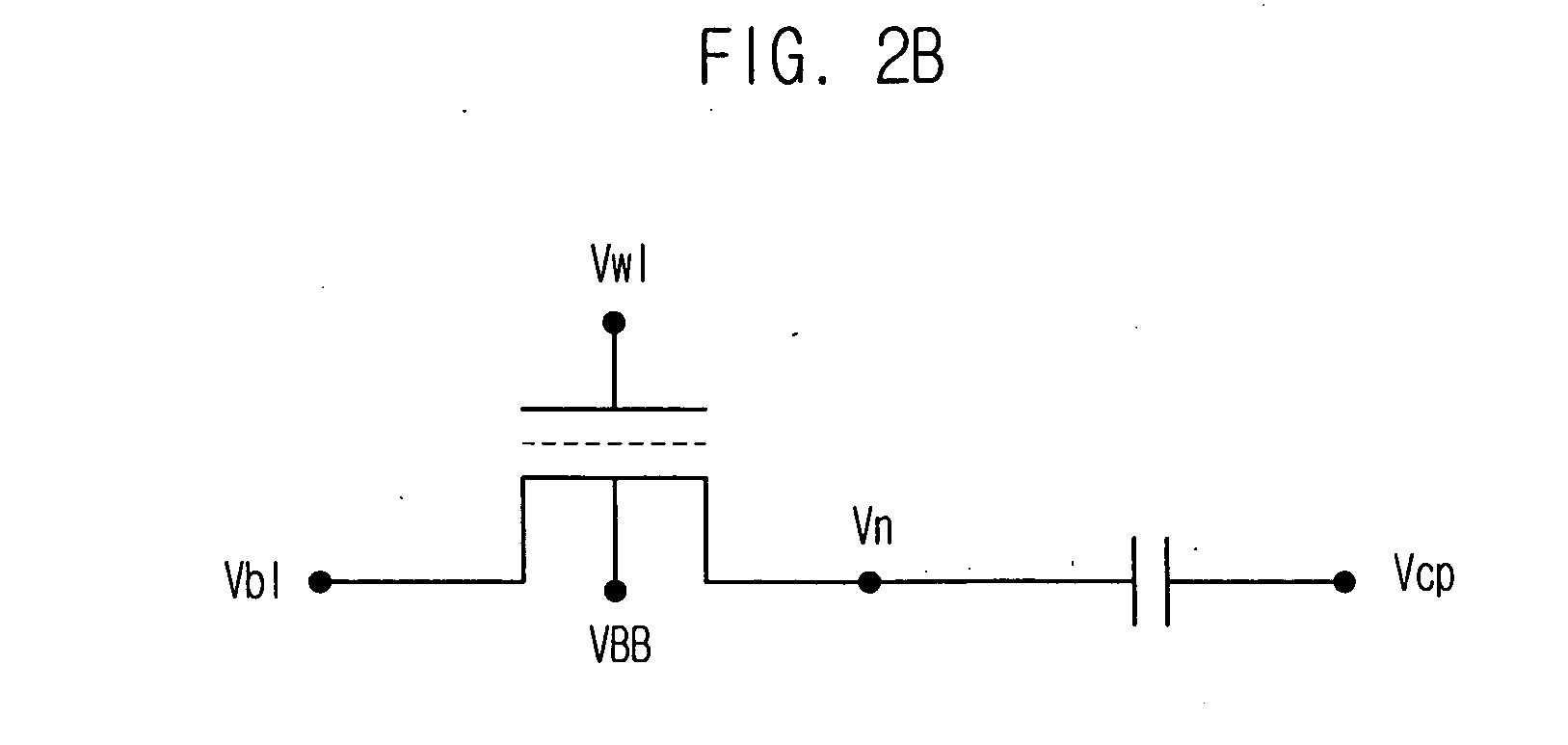Driving circuit for non-volatile DRAM
a non-volatile, random access memory technology, applied in the direction of digital storage, instruments, transistors, etc., can solve the problems of inability to transfer data in parallel from a capacitor to a floating gate in all cells, the method and process of fabricating the dram cell may be more complex, and achieve the effect of easy control of the nvdram
- Summary
- Abstract
- Description
- Claims
- Application Information
AI Technical Summary
Benefits of technology
Problems solved by technology
Method used
Image
Examples
Embodiment Construction
[0023] Hereinafter, a non-volatile dynamic random access memory (NVDRAM) device will be described in detail with reference to the accompanying drawings.
[0024]FIG. 2A is a sectional view showing a unit cell of an NVDRAM in accordance with the present invention. FIG. 2B is a schematic circuit diagram showing a unit cell of the NVDRAM in accordance with the present invention.
[0025] As shown in FIG. 2A, a DRAM cell includes a transistor and a capacitor 209. However, the transistor in the unit cell of the NVDRAM further includes a trapping layer 203 under a control gate 201. Herein, the trapping layer 203 made of non-conductor can trap electrons or holes.
[0026] In the present invention, the trapping layer 203 is provided with a single layer. Also, a plate line of the capacitor 209 is supplied with a plate line voltage Vcp which is controllable, not a fixed voltage, e.g., a ground voltage. As a result, because of the plate line, a size of the unit cell can be decreased. Also, a method ...
PUM
 Login to View More
Login to View More Abstract
Description
Claims
Application Information
 Login to View More
Login to View More - R&D Engineer
- R&D Manager
- IP Professional
- Industry Leading Data Capabilities
- Powerful AI technology
- Patent DNA Extraction
Browse by: Latest US Patents, China's latest patents, Technical Efficacy Thesaurus, Application Domain, Technology Topic, Popular Technical Reports.
© 2024 PatSnap. All rights reserved.Legal|Privacy policy|Modern Slavery Act Transparency Statement|Sitemap|About US| Contact US: help@patsnap.com










